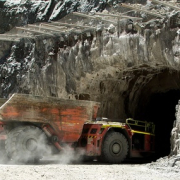OTR Tire Recycling Solutions: Reduce Waste and Extend Tire Life
OTR tire recycling represents a groundbreaking shift toward sustainability, offering powerful solutions for some of the world’s largest and most challenging tires. The immense environmental impact of off-the-road (OTR) tires, coupled with their high production costs, makes recycling not only a financially sound choice but also a necessary ecological move.
Mining, construction, and other industries heavily depend on OTR tires, and without efficient recycling, these massive tires would contribute significantly to global waste. Through innovative processes, sustainable practices, and essential tools like tire protection chains, we can prolong tire life and maximize recycling efforts. This article provides a deep dive into OTR tire recycling, highlighting the processes, challenges, and essential practices, and includes insights into tire protection chains that help extend tire life and reduce replacement costs.
The Need for OTR Tire Recycling
OTR tires serve heavy-duty industries like mining, construction, and forestry, enduring extreme terrain, massive loads, and harsh environments. As these tires wear down, they need replacement or disposal, which presents significant waste and environmental challenges. Recycling helps mitigate these challenges by reprocessing used tires, transforming them into reusable materials, and reducing landfill contributions. With strategic recycling practices, companies can minimize waste, improve sustainability, and cut costs.
Benefits of Recycling OTR Tires
Recycling OTR tires offers numerous benefits:
- Environmental Impact Reduction: Recycling drastically reduces the volume of tires entering landfills. It minimizes the release of toxic chemicals and potential groundwater contamination.
- Resource Conservation: Recycled rubber can be reused in various applications, reducing the need for new raw materials.
- Cost Savings: Recycled tire materials are more affordable, saving industries money on replacements.
- Energy Efficiency: Recycling uses less energy than producing new tires from scratch, further decreasing the carbon footprint.
The OTR Tire Recycling Process
To fully understand OTR tire recycling, it’s essential to examine the step-by-step process involved in transforming these tires from waste to reusable materials.

Collection and Sorting
The first step in OTR tire recycling is the collection and sorting of used tires. Specialized collectors partner with industrial clients to retrieve worn-out tires and transport them to recycling facilities.
Shredding and Size Reduction
Large shredders break down the massive tires into smaller, manageable pieces. These chunks make handling easier and allow further processing to be more efficient.
Separation of Components
Tires contain steel and fabric components, which need separation from the rubber. Advanced machines perform this step, ensuring that the final product is purer and more suitable for further applications.
Rubber Pulverization
The rubber is pulverized into fine granules, ready for reuse in products like asphalt, construction materials, and even new tire manufacturing.
Quality Control and Testing
Recycled tire materials undergo rigorous testing to ensure they meet safety and quality standards. Only top-quality rubber moves on to the final stages for market use.
Applications of Recycled OTR Tires
Recycled OTR tires have a variety of uses across multiple industries, making them a valuable resource. Here are some of the most common applications:
- Construction: Recycled rubber enhances asphalt for road construction, improving durability and reducing noise.
- New Tires and Retreading: Many manufacturers use recycled rubber in new tire production and retreading, creating durable, eco-friendly tires.
- Agricultural and Industrial Equipment: Recycled rubber is used for vibration dampening in equipment, enhancing operational efficiency.
- Mats and Flooring: Rubber mats, gym flooring, and playground surfaces benefit from the durability of recycled OTR rubber.
Tire Protection Chains and Their Role in Extending OTR Tire Life
Tire protection chains are crucial in extending the lifespan of OTR tires. These specialized chains wrap around tires to shield them from excessive wear, sharp rocks, and other hazards in rugged environments. By using protection chains, industries can reduce tire replacements, increase safety, and improve performance.
How Tire Protection Chains Work
Tire protection chains consist of heavy-duty steel links designed to distribute impact and protect against cuts and abrasions. These chains are especially valuable in mining and quarrying, where conditions cause accelerated tire wear. By covering the tread and sidewalls, they prevent damage from sharp objects and extreme pressures.
Benefits of Tire Protection Chains
- Extended Tire Life: Chains prevent premature wear and tear, prolonging tire life.
- Reduced Costs: With fewer replacements needed, tire protection chains help companies save on tire costs.
- Increased Safety: Chains prevent tire punctures, reducing risks of blowouts and improving on-site safety.
- Enhanced Performance: With reduced wear, OTR tires can perform optimally for longer periods.
Choosing the Right Tire Protection Chain
Selecting the right tire protection chain depends on several factors:
- Terrain Type: Different terrains require varied chain designs; rocky environments need more robust chains.
- Tire Size: Chains must fit perfectly to provide optimal coverage and protection.
- Usage Intensity: High-frequency operations need thicker, more durable chains.
Challenges in OTR Tire Recycling
Despite the benefits, OTR tire recycling faces several challenges. These tires are significantly larger and more complex than standard tires, which require advanced recycling processes and machinery. Let’s look at some of the major obstacles.
High Processing Costs
The heavy-duty machinery needed to shred and separate OTR tires can be costly, creating a barrier for smaller recycling facilities. In addition, transporting these tires from remote industrial locations to recycling centers incurs additional expenses.
Regulatory Compliance
Recycling OTR tires must meet strict environmental and safety regulations. Ensuring compliance involves rigorous testing and quality control measures, which can add to operational costs.
Limited Market for Recycled Materials
Though there are many uses for recycled OTR rubber, the market can be limited. This limitation often impacts profitability for recycling businesses, which rely on consistent demand to stay viable.
The Future of OTR Tire Recycling
As industries continue to focus on sustainability, the future of OTR tire recycling looks promising. New technologies, increased regulation, and an emphasis on environmental responsibility will likely drive further innovation and growth in this sector.
Increased Regulatory Support
Governments worldwide are introducing stricter tire disposal and recycling regulations, promoting environmentally responsible practices. Incentives and subsidies for recycling operations encourage further growth.
Public Awareness and Corporate Responsibility
Rising public awareness and demand for corporate responsibility are pushing industries to adopt sustainable practices. Companies are expected to recycle and improve production practices to support a circular economy.
Advances in Recycling Technology
Technological innovations in recycling are anticipated to make OTR tire recycling more efficient, reduce costs, and increase the feasibility of large-scale operations.










